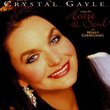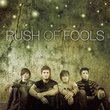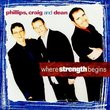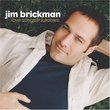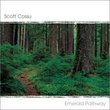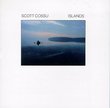| All Artists: Igor Stravinsky, Antal Dorati, Harold Lawrence, London Symphony Orchestra Title: Stravinsky: The Firebird (Complete Ballet); Fireworks; Song of the Nightingale Members Wishing: 0 Total Copies: 0 Label: Philips Original Release Date: 1/1/1991 Re-Release Date: 2/8/1991 Genres: International Music, Classical Styles: Latin Music, Tango, Ballets & Dances, Ballets, Chamber Music, Forms & Genres, Theatrical, Incidental & Program Music, Historical Periods, Modern, 20th, & 21st Century Number of Discs: 1 SwapaCD Credits: 1 UPC: 028943201223 |
Search - Igor Stravinsky, Antal Dorati, Harold Lawrence :: Stravinsky: The Firebird (Complete Ballet); Fireworks; Song of the Nightingale
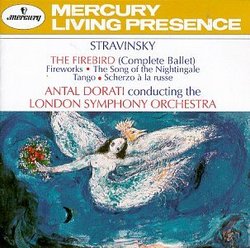 | Igor Stravinsky, Antal Dorati, Harold Lawrence Stravinsky: The Firebird (Complete Ballet); Fireworks; Song of the Nightingale Genres: International Music, Classical
Antal Dorati was a veteran ballet conductor and a personal friend of Stravinsky. His recording of The Firebird was a legend in its own time, and its reappearance on CD, sounding better than ever, immediately reestablishe... more » |
Larger Image |
CD DetailsSynopsis
Amazon.com Antal Dorati was a veteran ballet conductor and a personal friend of Stravinsky. His recording of The Firebird was a legend in its own time, and its reappearance on CD, sounding better than ever, immediately reestablished its supremacy. All of Stravinsky's complete ballets--as opposed to the suites-- have "dead spots," moments when the music sort of stops and lurches about, illustrating something happening onstage. That's why the composer made the suites in the first place. However, many of his most fascinating orchestral ideas occur precisely in these "dead spots," which is why many conductors and audiences prefer the works complete. Trust Dorati: he's the most reliable guide to this music, and his orchestra gives him a virtuoso response. --David Hurwitz Similarly Requested CDs
|
CD ReviewsUnsurpassed. Jay | Republic of Ireland | 10/26/2002 (5 out of 5 stars) "There is only one word to describe Dorati's recording of The Firebird, definitive. No one before or since has managed to combine the delicate almost impressionist passages of the score with the violence of the infernal dance to such tremendous effect. Stravinsky's ground breaking score is treated with all the sensitivity and respect that it demands, yet Dorati never seems overwhelmed by it as many other interpreters seem to be, the conductors grip on the music is palpable, but this never prevents the music from breathing freely. Much has been made of the sound quality of the CD issue, for me this was never a problem. I listened to this CD on my Musical Fidelity CD Player fed through Conrad-Johnson amplifcation to Sonus Faber Speakers or Grado headphones. This system is very revealing of poor sound quality and I honestly felt that the Performance venue (Walthamstow Town Hall outside London) was very well captured, although their was some hardness to the upper midrange, compared to my original SR-1 Mercury LP pressing (Played on a Linn LP12), that is to be expected with CD's, it's a fault of the format rather than Bob Fine's recording or Wilma Cosart Fine's remastering. I'm just left to wonder what an SACD version would sound like. Over to you Wilma :)" As Magical as the Fairy Tale Nancy L. Mowers | 11/27/2000 (5 out of 5 stars) "One of the first ballet scores that Stravinsky did, it is and always will be a classic. It completely epitomizes the Russian tale of a prince who comes across an enchanted garden, recieves help from a beautiful bird, and saves a princess from the evil sorcorer Kachei. This particular album is wonderful because it has the full score which includes my favourite song,The dance of the Princesses. You must own this if you love classical or neo-classical music." The Golden Age Mitchell Lee | Richmond, VA United States | 04/18/2008 (5 out of 5 stars) "The Golden Age
Several years ago I bought out the entire LP collection of a classical radio station that was going out-of-business. Among the ten thousand or so items were several dozen Mercury Living Presence LPs. Now, radio stations do not treat LPs with kid gloves. They had all seen use and abuse. None-the-less, they were generally spectacular examples of the Golden Age of the LP before the switch over to Dolby, transistors and a clutter of close-up microphones that capture every hum and page-turn, but loose the hall and the ensemble. Yesterday evening my wife was out with the kids, so I decided to pull out the Dorati Firebird with the LSO. I am talking about the CD, now. I gave it a listen over a very accurate modern 7-channel system with a gaggle of classic SONY APM22 ES square aluminum driver-based speakers. It sounded wonderful. Everything was precisely in its place acoustically and the performance itself was stunning, but somehow it just did not send shivers down my spine. So I fired up my Big Old Tube rig from the 1950s to 70s: Technics Q-3, Shure V15 Type III, Dyna PAS-3x and Dyna Stereo 70 all feeding custom-built loudspeakers with unpronounceable European woofers and HUGE Heil AMT tweeters. First the lead-in groove with a few crackles-- Then wondrous old tube hiss from the Mercury mixing console is layered in. Then the low rumbling introductory section, the first blat of brass and, yes!, genuine musical shivers! What I find most impressive about this Mercury recording is how well it suites Dorati's performance. They are both bold enough for Stravinsky's dramatic magic to shine through, but also very well thought-out. This is no mean trick! It is a bit of a mystery how Dorati was able to combine such passion and control. It is also a bit of a mystery how the Mercury team was able to capture such musical and stage detail with only three microphones. BUT the fact that succeeded so spectacularly puts the lie to the idea that arrays of close-up microphones are anything more than an editing convenience to reduce production costs. This is a swirling surging stereo-rama extravaganza of sonic and musical brilliance complete with all the shivers. The music comes at you from every point across the stage and from every depth at one moment or another during the performance. The only thing the recording does not catch the performers doing is levitation. Though EPIC and CBS produced some fine recording, I really wish Szell and Bruno Walter had recorded for Mercury. Szell on Mercury! Can you imagine?! Well, getting back to my evening without the kids-- Did I mention that I also fed the Output from the Dyna PAS3x preamplifier into my PC as I was listening on the Big Old Tube stereo? Well, I did and caught an MP3 copy at 256K VBR through Diamond Cut's DC7. I put this on a Sansa e250 along with MP3s made from the CD and another set from the SACD, grabbed a pair of handy Ultimate Ears in-ear headphones and headed out to walk the dogs. The moon was almost full and the air had that special early spring mix of crispness and mold spores. As I steered the dogs though a wooded area on the north bank of the James River, I listened first to the LP version, then the CD and then the SACD. No, I was not hearing the MP3 encoding! The original material came though fine at this bit rate, thank you! After about half-an-hour the CD was out of the race and it was between the LP and the SACD. AND I have to say that the SACD sounded far better than the LP, but in the end I wound up listening to entire performance though again using the MP3s made from the LP. It was just easier for me to focus on Stravinsky's great ideas in this format. Perhaps the small amount of distortion served to keep me more attentive. I am not sure. Like so many other things in this life, pleasure is a mystery. PS. DO not hesitate to buy this performance in ANY format. It is head-and-shoulders above most others and a fine (and FUN) experience purely on its own terms. " |

 Track Listings (29) - Disc #1
Track Listings (29) - Disc #1